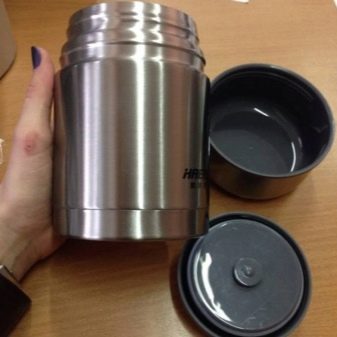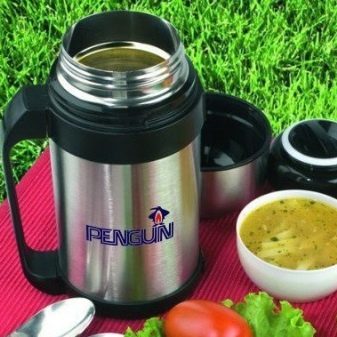Varieties of thermoses for soup and the nuances of their choice
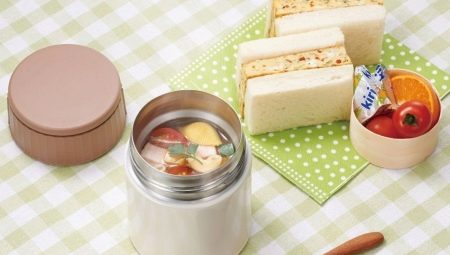
Thermos flasks with and without heating, for soup and other first courses with a wide neck, managed to get into the list of absolutely irreplaceable goods for people who have to work on a daily schedule or spend a lot of time traveling. In such containers fishermen, hunters and tourists take hot food with them. When choosing a soup thermos, it is important from the very beginning to find out the maximum of useful information about it, to clarify how much food can be stored in it, to find out how to use such a product correctly.
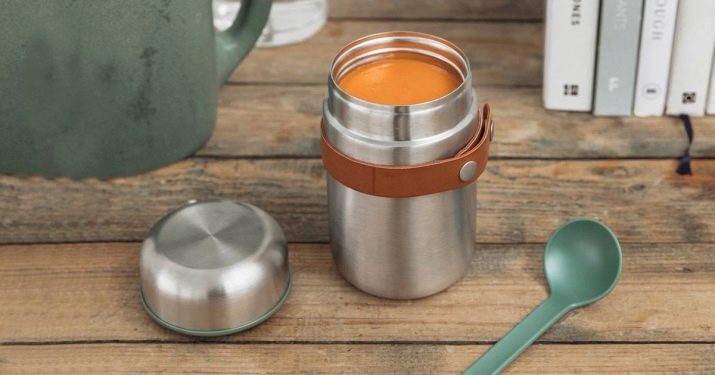
general description
Special thermal containers for first courses began to be produced relatively recently, but have already gained popularity among customers. Such containers are characterized by increased capacity, have a wide neck.
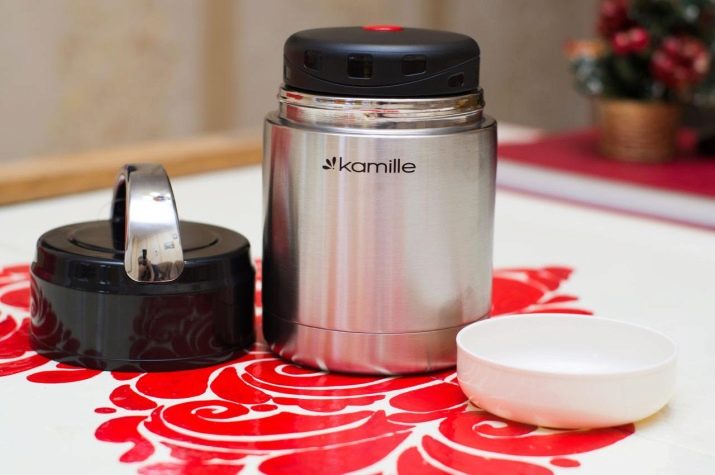
A soup thermos consists of several elements.
- A walled container, usually of a cylindrical shape. The part of the body around the flask is made of heat-absorbing material. The outer shell must have a low thermal conductivity so as not to heat up during use.
- Threaded caps. With its help, the neck is closed, heat is effectively retained inside the vessel. The deep lid can usually be used as a bowl or plate during meals.
- Gaskets. It protects against leaks, possible accidental depressurization of the container.
- Flasks. It contains food products. Soup thermoses are able to keep the temperature for 5-6 hours. Special tourist models - up to a day.
- Neck. Through it, food is poured into the container.
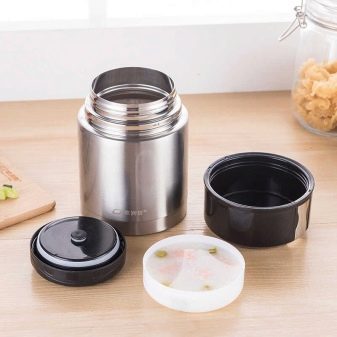
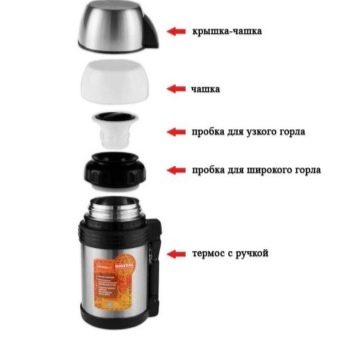
And also thermoses for first courses are often equipped with convenient carrying handles, include additional components - spoons, plates.Such sets are convenient for a short trip or trip.
They will be especially useful for those who adhere to certain dietary rules.
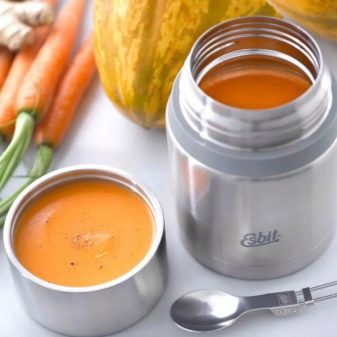
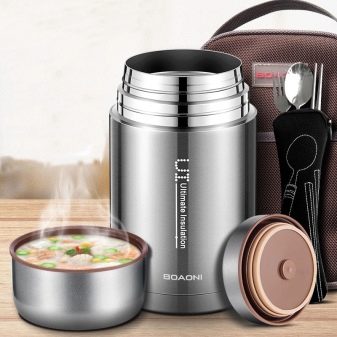
Species overview
Thermoses for hot meals are usually well equipped for transport. Hiking models are supplied in a case, can have a heated bottom, and are easily adaptable to use in a variety of conditions.
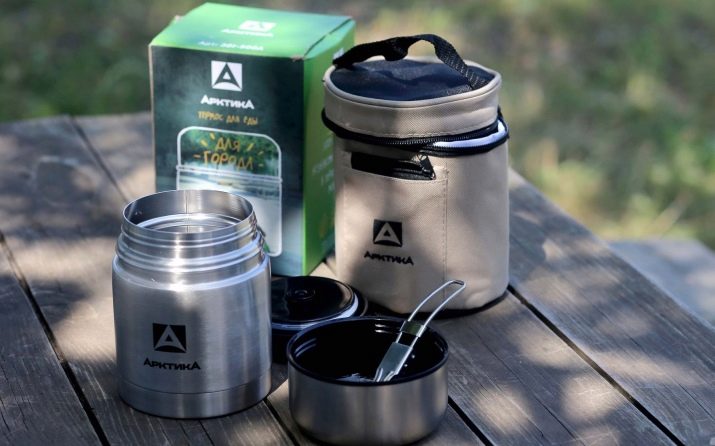
The classic ones are more like ordinary thermoses, but their proportions are noticeably increased, the neck has a larger diameter. There are several types of such accessories.
-
With containers. The number of individual containers installed in the flask may vary depending on the model. This option is great when traveling. You can get ready meals as soon as a person gets hungry.
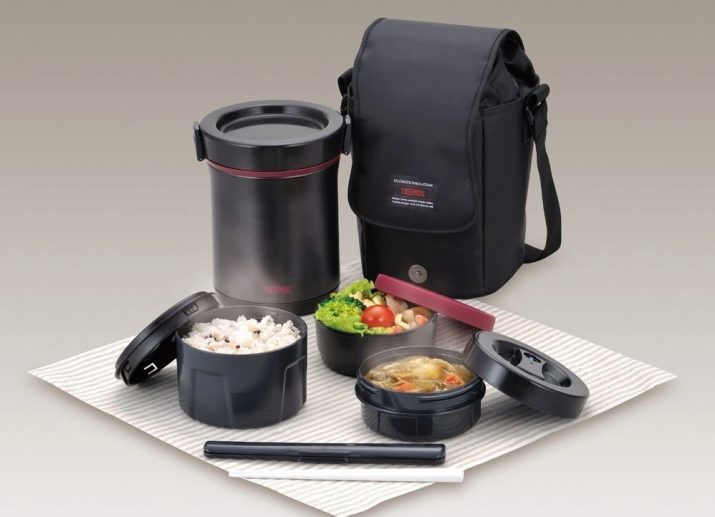
- With a wide throat. These models allow you to eat directly from the thermos. The heat is retained inside for more than 6 hours. Thermoses with a wide mouth have an affordable price, while their functionality is not inferior to other options.
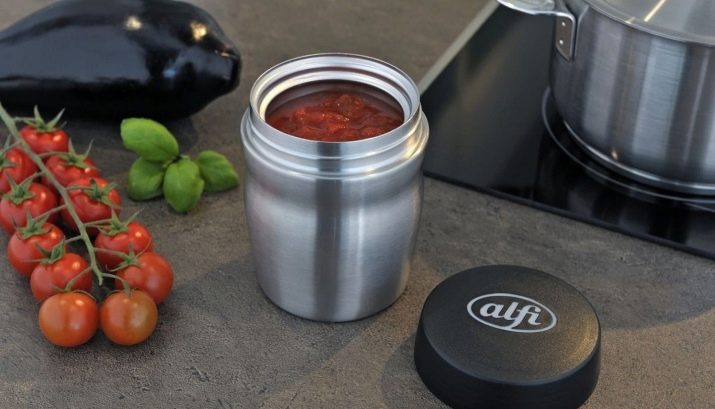
- Baby. A good choice for toddlers and schoolchildren who attend sports clubs or are forced to adhere to a certain diet. At home, a brightly colored children's thermos is useful in cases when the child still does not know how or is afraid to use the stove. Dishes in it will stay hot for 5-6 hours. In such models, only environmentally friendly, safe materials, durable safety flasks, and holder handles are used.
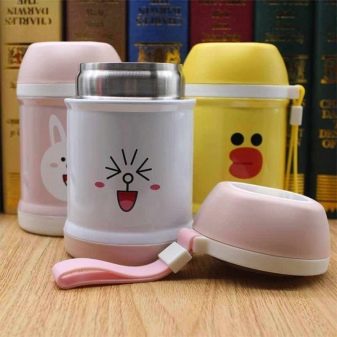
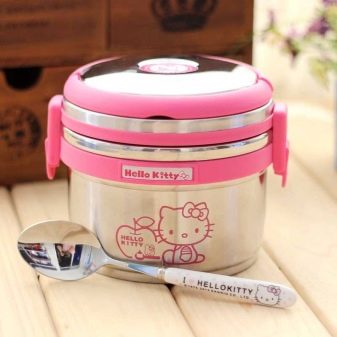
- Thermos plates. Such thermoses differ from the classic cylindrical version in shape. Such a thermal container is convenient to carry in a bag, to use for food. According to their main characteristics, they are not inferior to the traditional options.
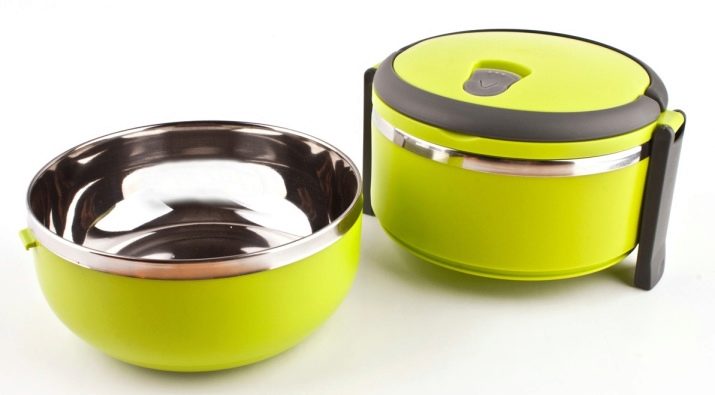
- Mini thermoses. A compact small thermos for those who eat small portions. It also has a wide mouth, but holds 0.25 to 0.5 liters of liquid hot soup, broth or main course.
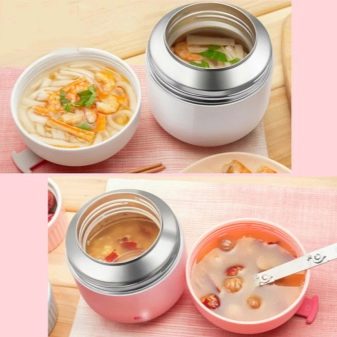
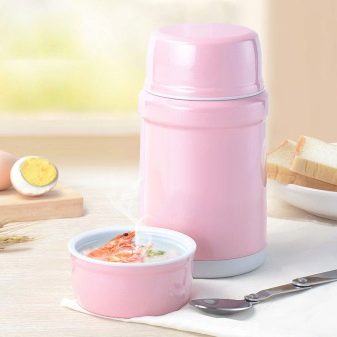
- Two-piece. These containers have insulated sections that allow you to store the first and second courses separately, directly in the flask. They retain heat less, but allow you to take a set meal or 1 dish and drink with you.
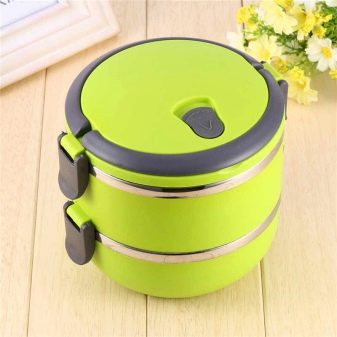
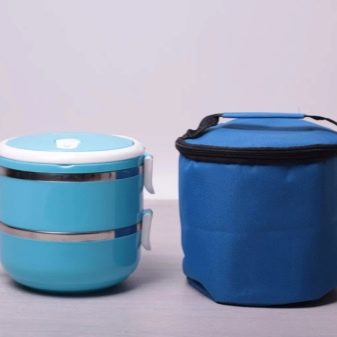
Also thermoses-bags are produced. You can put dishes in them, the temperature of which must be kept.
They are convenient to carry, but require the use of auxiliary containers, which significantly increases the volume of luggage.

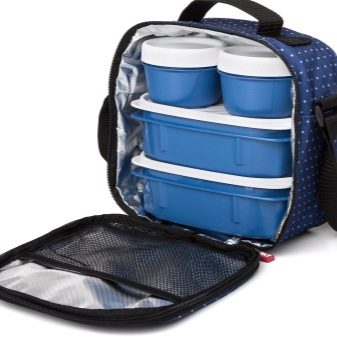
Materials (edit)
Thermoses for soups and other liquid hot dishes can be made from different materials. In the case of the case, the choice is not too great. Most tourist models have it made of stainless steel. Such thermoses are strong, durable, not afraid of corrosion, but their weight is noticeably higher than that of analogs in a plastic case.

A casing made of polymeric materials is considered suitable for everyday use. A thermos with such a body is easy to clean and wash, but it is afraid of squeezing, shock loads.
The plastic sheath can absorb foreign odors. Otherwise, these models are quite convenient, they are easy to take with you to work, study, training in a regular bag or backpack.
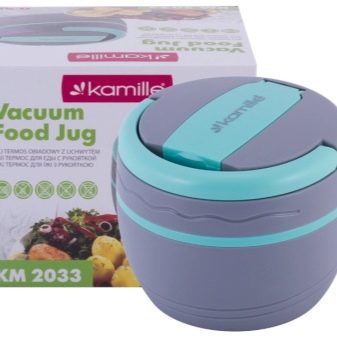
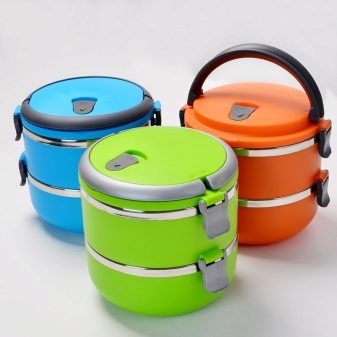
Much more attention should be paid to what materials the bulb is made of. It is she who directly comes into contact with food. There are several materials among the available options.
-
Glass. It has a silver-plated amalgam coating for better reflection and heat retention. A thermos with a glass bulb can hardly be called safe. If dropped, fragile material may break, crack. But there are also advantages - such flasks keep warm well, do not absorb odors, and are easy to clean.
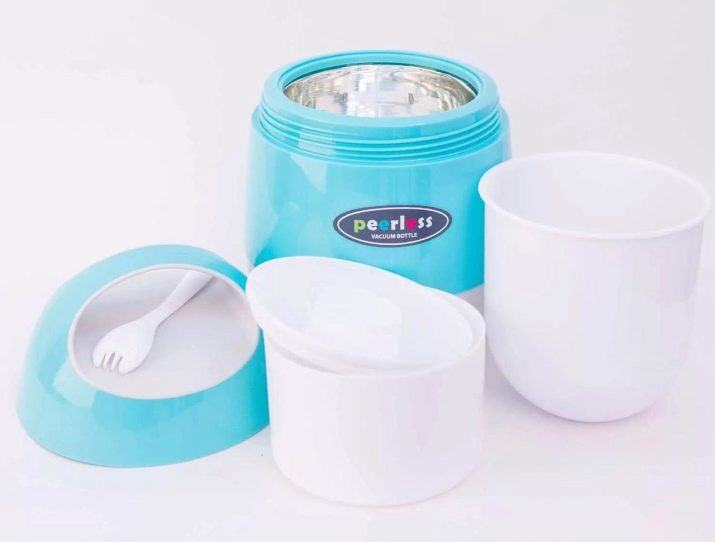
- Stainless steel. Such flasks are good because they are protected from corrosion, chemically neutral, and hygienic. The food inside is well preserved, does not change its taste. The disadvantages include only faster cooling of soup and other liquids, difficulties with washing a thermos after fatty meals.
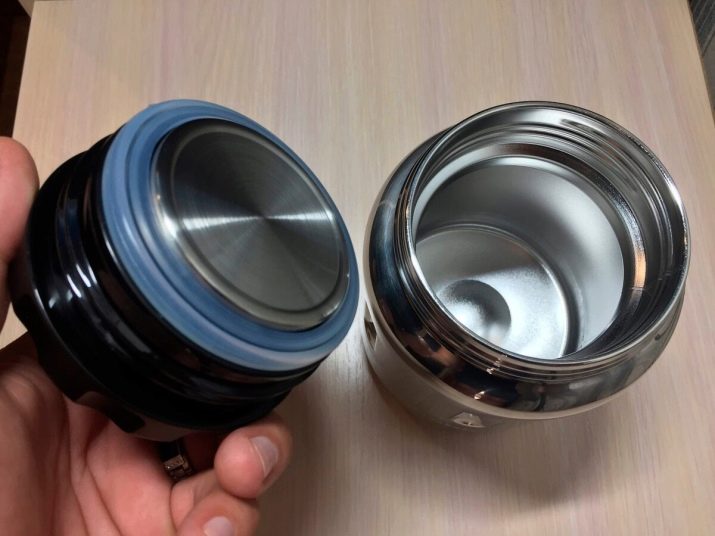
- Plastic. The most budgetary option, but definitely not the best in terms of its characteristics.Such flasks absorb odors, they are difficult to wash, and in terms of their ability to retain heat, they are inferior to both glass and metal versions. You can choose a thermos with a plastic insert only if the price and weight of the product are of decisive importance.

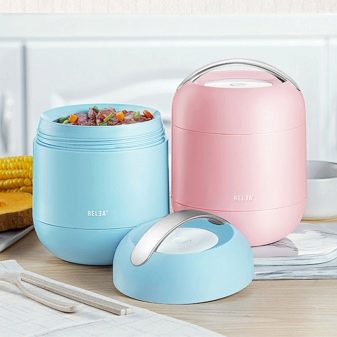
The best combination of materials for soup containers is a stainless steel shell and a glass flask. And also all-metal options are highly valued.
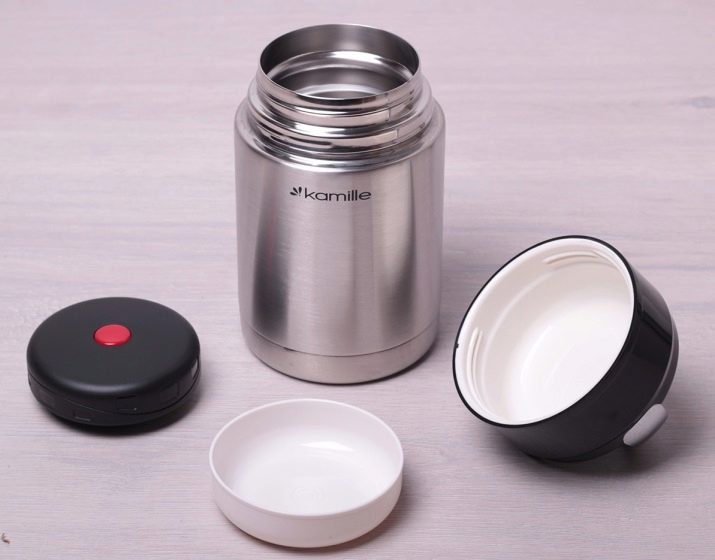
Plastic models are especially common in the children's product segment.

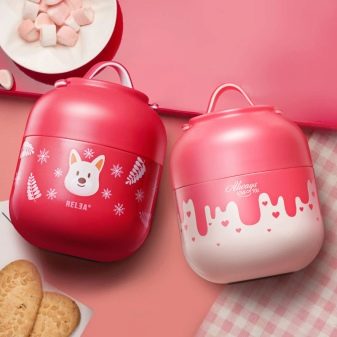
Top Models
The modern market offers a lot of specialized goods for the transportation of hot meals. The popularity rating will help to understand which model holds the temperature better and longer, and is suitable for long-term use.
-
Biostal NRP. The model is equipped with a thermal container, has a volume of 0.6 l, made of stainless steel. Hot dishes keep the temperature up to 12 hours, cold ones - up to 19.

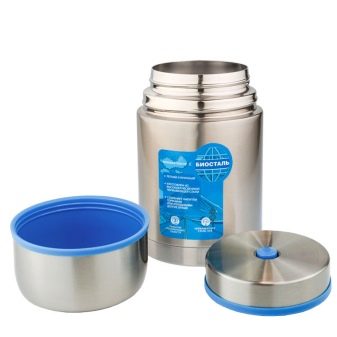
- "Arctic 403-1500". Stainless thermos with plastic flask and 3 vacuum containers. Keeps temperature up to 6 hours.
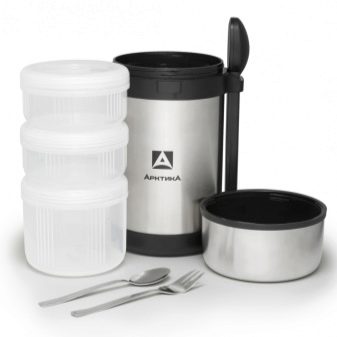
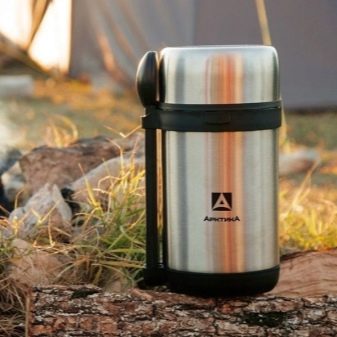
- Thermos JBQ-400. Bright and compact thermoses from this manufacturer have a volume of 0.4 liters. The stainless steel flask keeps heat up to 6 hours. Among the advantages of the model are a collapsible design, a double lid, and minimal weight.
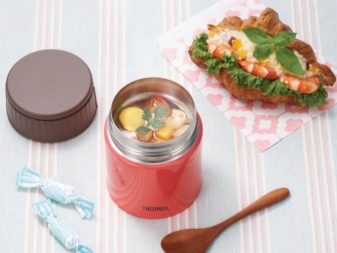

Also noteworthy are the products of Rondell, Zojirushi, EMSA, Tiger, Laplaya.
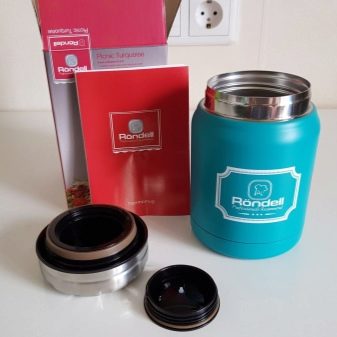
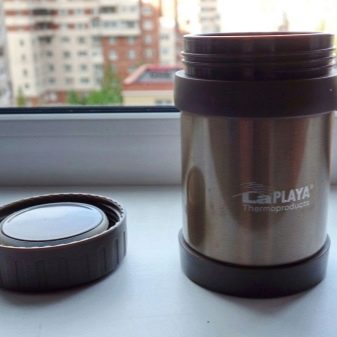
Secrets of choice
When deciding to choose a soup thermos for yourself, it is worth compiling a list of criteria from the very beginning by which you can determine the conformity of the product to the wishes of the buyer.
- Duration of keeping warm. These indicators depend on the material of the flask, the thermal insulation layer. A thermos for food keeps the heat up to 6 hours on average. Tourist models can save these indicators for up to a day.
- The tightness of the vessel. A high-quality food thermos has a convenient filler neck and a lid that can fit as tightly as possible. The sealed thermos will not leak even if you turn it upside down. A plug with a valve in such models is simply useless, it must be one-piece.
- Desired volume. A large 5 or 10 liter thermos of soup is considered a good choice for hiking or fishing. A volume of 3 or 2 liters is optimal for transporting lunch for 2-3 people. It can be taken for family meals in the country. Containers of 1 liter are suitable for an adult who takes food with him to work.
- Equipment. Additional containers, recessed lid, spoons and forks, case. All this makes the use of the thermal container more convenient. And also, if necessary, you should consider buying a thermos with a heating function.
When choosing, you should pay attention to checking the quality of the product itself. There should be no foreign odors inside the flask. The shaking sounds of the container will only be heard if the parts are not properly secured.
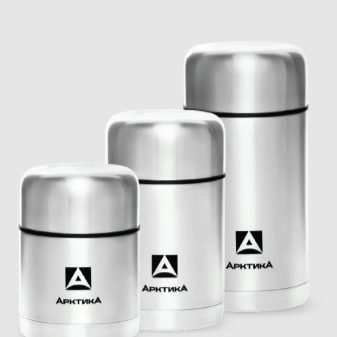
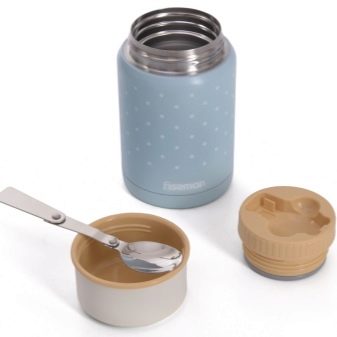
Errors in use
When using a soup thermos, you need to remember that it is intended for storing ready-made meals. It is strictly forbidden to transport technical fluids in it. After use, the inside of the flask must be thoroughly washed.
If you break this rule, you will notice that the food turns sour after 5-6 hours, acquires a strange taste or smell.
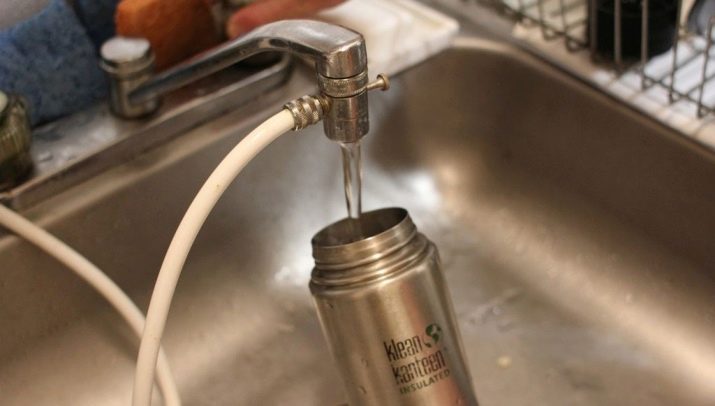
Do not pour hot soup into a cold container. First, it is warmed by rinsing with boiling water. In this case, the food can be kept hot for much longer. Do not drop or throw the thermos - this can lead to its failure.
